a stirling idea
from Warpfive Fans
Most of us have a mad cap idea at least once in our lifetime. Ours came along a few years ago, when we decided to design and build Stirling engines. Little did we realise how much effort and dedication would be required, but once the bug had bitten there was no going back!
heat used as fuel?
Stirling engines are amazing miniature engines. Three things make them special… they use only heat as fuel, they are almost silent plus they are extremely powerful. Furthermore they have no electrical components and are purely mechanical. Consequently they’re extremely reliable and with care will last a lifetime.
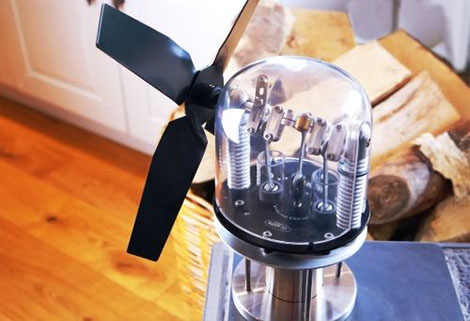
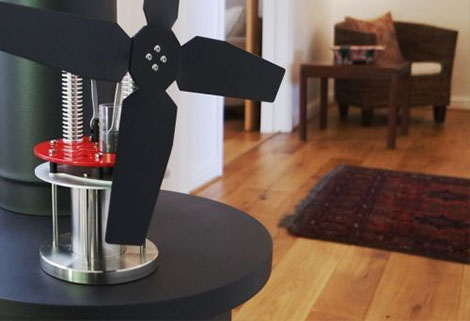
How do they work? Place the Stirling engine on top of a heated surface and let it warm up. Once the air inside the cylinder has heated at the base of the engine, it is forced up by the displacer to the cool top plate. As this sealed volume of air moves from the warm base to the cooler top plate, it expands and contracts. While it expands it pushes the piston up; and when it contracts it pulls the piston down. The piston is connected to a crank shaft and the oscillating cycle rotates the crank.
Because Stirling engines are very precise little devices, they need to be built with extra care and attention. However the effort is greatly rewarded when the crank rotates and the engine begins to work - this is when the engine produces mechanical power. Industrial Stirling engines produce so much mechanical power that they are used in cryogenic refrigeration, submarine propulsion, and electrical production. At Warpfive Fans... we use the power to spin a fan blade. Our stove fans are so efficient that you can reduce your fuel usage by up to 22%, and heat your narrow boat up to 40% faster.
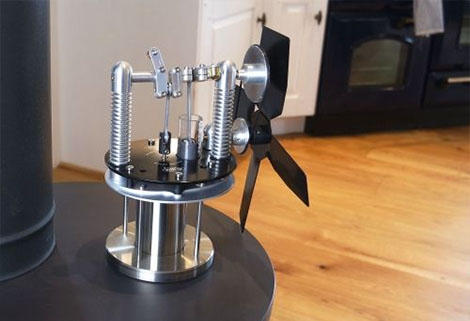

thermodynamic mumbo jumbo…
Now you know what a Stirling engine is. But why complicate life by delving into this world of thermodynamic mumbo jumbo? The answer is simple really – at Warpfive we care about our planet. Efficient thermodynamic management systems are the future.
Stirling engines are highly compatible with alternative and renewable energy sources. They are extremely efficient, work quietly and can be used on almost any heat source. The Stirling engine is currently exciting interest as the core component of solar powered electricity generators, as well as in the space industry to power satellites.
At Warpfive we’ve gradually expanded our range of Stirling engines to include a variety of stove fans for use on top of your log stove or diesel heater, as well as aroma diffusers and table fans for use in your home. However we still spend an enormous amount of time researching emerging technology and examining the performance of low-emission alternative power sources. Why? – Because we are on a constant drive to improve our products by making them even more efficient.
Over the last 13 years, our ‘Stirling idea’ has evolved into a small family run business. We design and hand-build all of our products here in the UK, whilst always aiming to make a positive contribution to our planet.

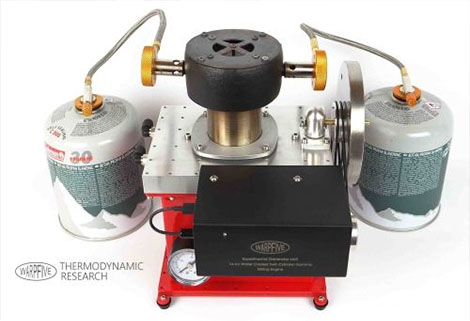
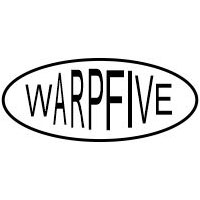 Warpfive Fans manufacture a range of eco-friendly products for use in your home. Every product is designed to combine classic elegance with engineering excellence. We aim to create beautiful products which you can enjoy and admire for a lifetime. All of our products are hand-crafted in the UK from durable materials that have been sourced and worked in the most eco-friendly method possible.
Warpfive Fans manufacture a range of eco-friendly products for use in your home. Every product is designed to combine classic elegance with engineering excellence. We aim to create beautiful products which you can enjoy and admire for a lifetime. All of our products are hand-crafted in the UK from durable materials that have been sourced and worked in the most eco-friendly method possible.
01626 866643 contact@warp-five.com Warpfive Fans

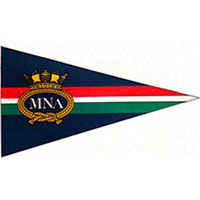
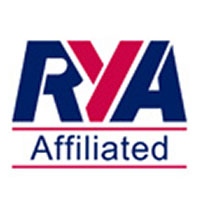
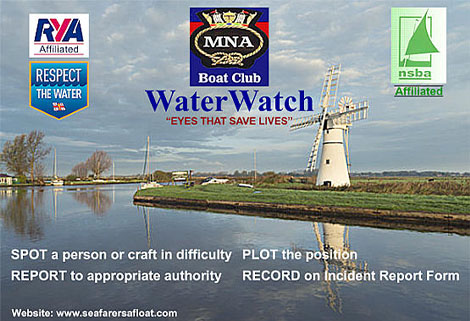
 The British Safety Industry Federation (BSIF) is the UK’s leading trade body for the safety sector and its annual Safety & Health Excellence Awards cover four categories; product innovation, safety solutions, customer service and water pollution prevention (the latter added in 2020).
The British Safety Industry Federation (BSIF) is the UK’s leading trade body for the safety sector and its annual Safety & Health Excellence Awards cover four categories; product innovation, safety solutions, customer service and water pollution prevention (the latter added in 2020).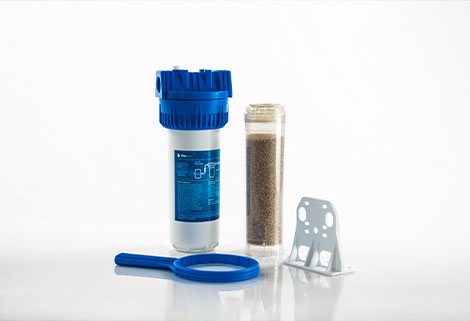
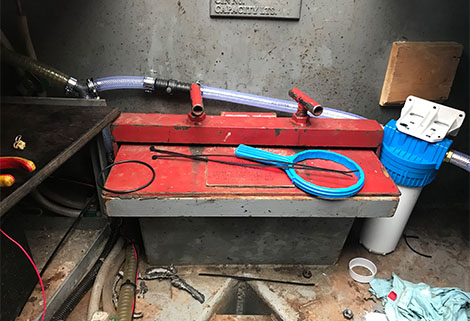 BSIF marketing manager, Ian Crellin, announced the winners at the end of April: “These Awards recognise the excellent work that goes on within the safety industry; we celebrate the constant innovation, expert knowledge and quality service that goes on every day - all with a goal of keeping people safe.”
BSIF marketing manager, Ian Crellin, announced the winners at the end of April: “These Awards recognise the excellent work that goes on within the safety industry; we celebrate the constant innovation, expert knowledge and quality service that goes on every day - all with a goal of keeping people safe.”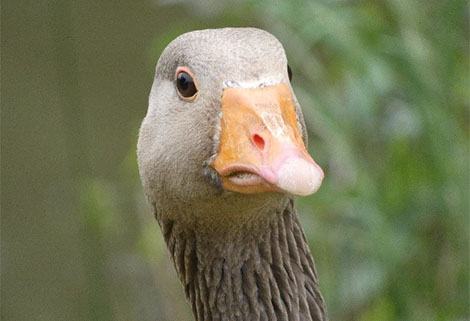 This edition of intertidal zone is the often-present interaction between the road system and the canal and river systems (and nature).
This edition of intertidal zone is the often-present interaction between the road system and the canal and river systems (and nature).

 There are visitor moorings adjacent to the bridge (1 day) and you will see from the signposts that you can walk or cycle into nearby towns and sights. A private sign on the fence advises of a pub within 5 minutes’ walk. Next to the bridge, for those who may wish to meet up with land-based folks, there are 2 car parks.
There are visitor moorings adjacent to the bridge (1 day) and you will see from the signposts that you can walk or cycle into nearby towns and sights. A private sign on the fence advises of a pub within 5 minutes’ walk. Next to the bridge, for those who may wish to meet up with land-based folks, there are 2 car parks.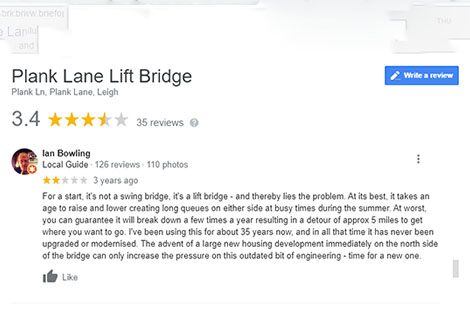
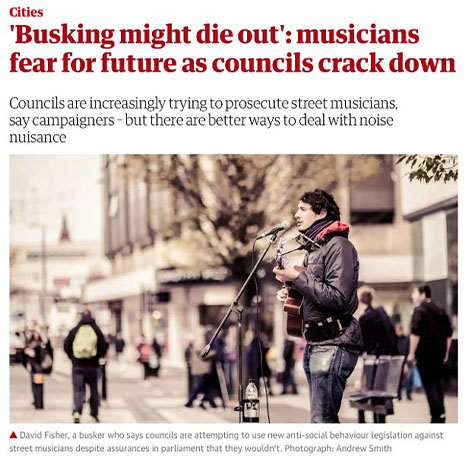 By 2015, street corners themselves were closing: proliferating
By 2015, street corners themselves were closing: proliferating  How do you harness that energy? How do you put together the world’s largest collection of aspiring performers with discriminating audiences? In compliance with Canal and River Trust rules that limit you to audiences of 12 and acoustic music? And post-Covid, how do you do it on a scale that addresses the fact that venues which successfully evaded gentrification remain shuttered? And will be shuttered again, as a first precaution authorities take when a novel virus next spreads?
How do you harness that energy? How do you put together the world’s largest collection of aspiring performers with discriminating audiences? In compliance with Canal and River Trust rules that limit you to audiences of 12 and acoustic music? And post-Covid, how do you do it on a scale that addresses the fact that venues which successfully evaded gentrification remain shuttered? And will be shuttered again, as a first precaution authorities take when a novel virus next spreads?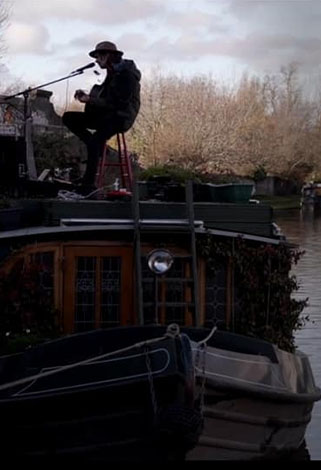
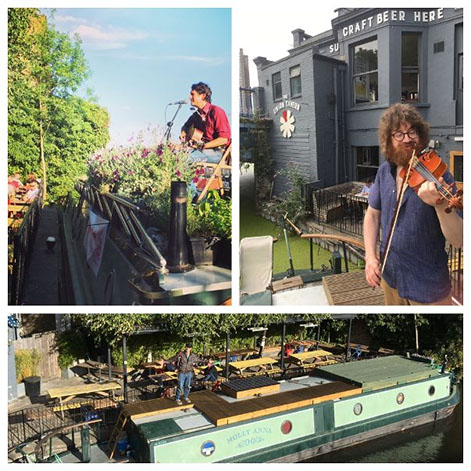
 It’s the first manifestation of Brigadoon!, with a handful of boats, that we expect to grow in number as we roll onto the next event a week later, and one a week after that. Each one reflecting the character of the neighbourhood. Each one requiring agreements between local Borough officials, CRT and Met Police. Each one leaving a template of risk assessments and Covid-precautions for other canal boat owners, roving traders and performers to jump start discussion with with local officials. Who this time, will already know what you’re trying to do.
It’s the first manifestation of Brigadoon!, with a handful of boats, that we expect to grow in number as we roll onto the next event a week later, and one a week after that. Each one reflecting the character of the neighbourhood. Each one requiring agreements between local Borough officials, CRT and Met Police. Each one leaving a template of risk assessments and Covid-precautions for other canal boat owners, roving traders and performers to jump start discussion with with local officials. Who this time, will already know what you’re trying to do. 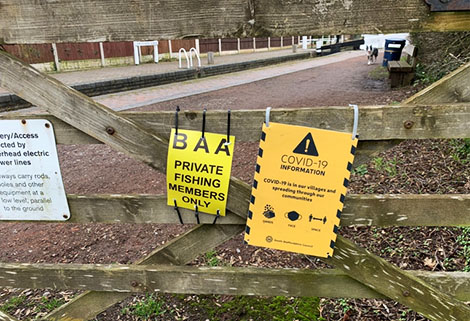 And what days they were, eh?
And what days they were, eh? We blamed the Chinese, completely forgetting that Ozzie Osborn had been stuffing raw bat down his neck with no ill effects for years, watched in awe as Donald Trump eclipsed even the efforts of Boris, our own resident buffoon and completely forgot that we were supposed to be blaming him for Brexit.
We blamed the Chinese, completely forgetting that Ozzie Osborn had been stuffing raw bat down his neck with no ill effects for years, watched in awe as Donald Trump eclipsed even the efforts of Boris, our own resident buffoon and completely forgot that we were supposed to be blaming him for Brexit. In a dazzling move, which stunned the world and certainly the EU who we’d recently left although no one had noticed, we developed a vaccine.
In a dazzling move, which stunned the world and certainly the EU who we’d recently left although no one had noticed, we developed a vaccine. In December 2001, Time Magazine featured the Cobb as one of the best inventions of that year. This was a major turning point for what had started out as an obvious idea to an environmentalist in Africa several years earlier.
In December 2001, Time Magazine featured the Cobb as one of the best inventions of that year. This was a major turning point for what had started out as an obvious idea to an environmentalist in Africa several years earlier.
 The Cobb is virtually smokeless, since the fat and oil drain away and not onto the fire. The base always remains cool-to-touch on the outside whilst cooking hot on the inside.
The Cobb is virtually smokeless, since the fat and oil drain away and not onto the fire. The base always remains cool-to-touch on the outside whilst cooking hot on the inside. the elements that make up Cobb...
the elements that make up Cobb... awards...
awards... So I’ve been a storyteller for about 24 years. I work all over the British isles at festivals and events and in schools, colleges and universities. Originally, I was a street theatre performer, fire breather and stilt walker.
So I’ve been a storyteller for about 24 years. I work all over the British isles at festivals and events and in schools, colleges and universities. Originally, I was a street theatre performer, fire breather and stilt walker. I currently live aboard Narrowboat Hawker (that features in the book) with my Wife Jo who is a puppeteer. We often have people on board for stories and shadow shows.
I currently live aboard Narrowboat Hawker (that features in the book) with my Wife Jo who is a puppeteer. We often have people on board for stories and shadow shows. 'Folk Tales from the Canal side' is one of those beautiful little books that grab you from the moment you see it. It is a nice size, easy to hold and easy to flick through. The front cover is enticing. The colours are those of a traditional canal boat, and the inset painting shows many things associated with boating, or with tales of boating: but a man with a donkey? and a whale?
'Folk Tales from the Canal side' is one of those beautiful little books that grab you from the moment you see it. It is a nice size, easy to hold and easy to flick through. The front cover is enticing. The colours are those of a traditional canal boat, and the inset painting shows many things associated with boating, or with tales of boating: but a man with a donkey? and a whale?